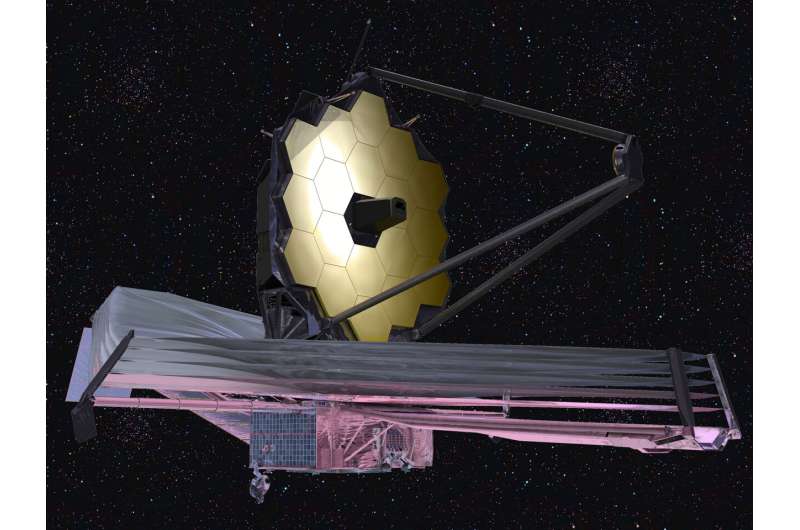Investigating the potential for life around the galaxy's smallest stars

When the world's most powerful telescope launches into space this year, scientists will learn whether Earth-sized planets in our 'solar neighborhood' have a key prerequisite for life—an atmosphere.
These planets orbit an M-dwarf, the smallest and most common type of star in the galaxy. Scientists do not currently know how common it is for Earth-like planets around this type of star to have characteristics that would make them habitable.
"As a starting place, it is important to know whether small, rocky planets orbiting M-dwarfs have atmospheres," said Daria Pidhorodetska, a doctoral student in UC Riverside's Department of Earth and Planetary Sciences. "If so, it opens up our search for life outside our solar system."
To help fill this gap in understanding, Pidhorodetska and her team studied whether the soon-to-launch James Webb Space Telescope, or the currently-in-orbit Hubble Space Telescope, are capable of detecting atmospheres on these planets. They also modeled the types of atmospheres likely to be found, if they exist, and how they could be distinguished from each other. The study has now been published in the Astronomical Journal.
Study co-authors include astrobiologists Edward Schwieterman and Stephen Kane from UCR, as well as scientists from Johns Hopkins University, NASA's Goddard Space Flight Center, Cornell University and the University of Chicago.
The star at the center of the study is an M-dwarf called L 98-59, which measures only 8% of our sun's mass. Though small, it is only 35 light years from Earth. It's brightness and relative closeness make it an ideal target for observation.
Shortly after they form, M-dwarfs go through a phase in which they can shine two orders of magnitude brighter than normal. Strong ultraviolet radiation during this phase has the potential to dry out their orbiting planets, evaporating any water from the surface and destroying many gases in the atmosphere.
"We wanted to know if the ablation was complete in the case of the two rocky planets, or if those terrestrial worlds were able to replenish their atmospheres," Pidhorodetska said.
The researchers modeled four different atmospheric scenarios: one in which the L 98-59 worlds are dominated by water, one in which the atmosphere is mainly composed of hydrogen, a Venus-like carbon dioxide atmosphere, and one in which the hydrogen in the atmosphere escaped into space, leaving behind only oxygen and ozone.
They found that the two telescopes could offer complementary information using transit observations, which measure a dip in light that occurs as a planet passes in front of its star. The L 98-59 planets are much closer to their star than Earth is to the sun. They complete their orbits in less than a week, making transit observations by telescope faster and more cost effective than observing other systems in which the planets are farther from their stars.
"It would only take a few transits with Hubble to detect or rule out a hydrogen- or steam-dominated atmosphere without clouds," Schwieterman said. "With as few as 20 transits, Webb would allow us to characterize gases in heavy carbon dioxide or oxygen-dominated atmospheres."
Of the four atmospheric scenarios the researchers considered, Pidhorodetska said the dried-out oxygen-dominated atmosphere is the most likely.
"The amount of radiation these planets are getting at that distance from the star is intense," she said.
Though they may not have atmospheres that lend themselves to life today, these planets can offer an important glimpse into what might happen to Earth under different conditions, and what might be possible on Earth-like worlds elsewhere in the galaxy.
The L 98-59 system was only discovered in 2019, and Pidhorodetska said she is excited to get more information about it when Webb is launched later this year.
"We're on the precipice of revealing the secrets of a star system that was hidden until very recently," Pidhorodetska said.
More information: Daria Pidhorodetska et al, L 98-59: A Benchmark System of Small Planets for Future Atmospheric Characterization, The Astronomical Journal (2021). DOI: 10.3847/1538-3881/ac1171
Journal information: Astronomical Journal
Provided by University of California - Riverside





















